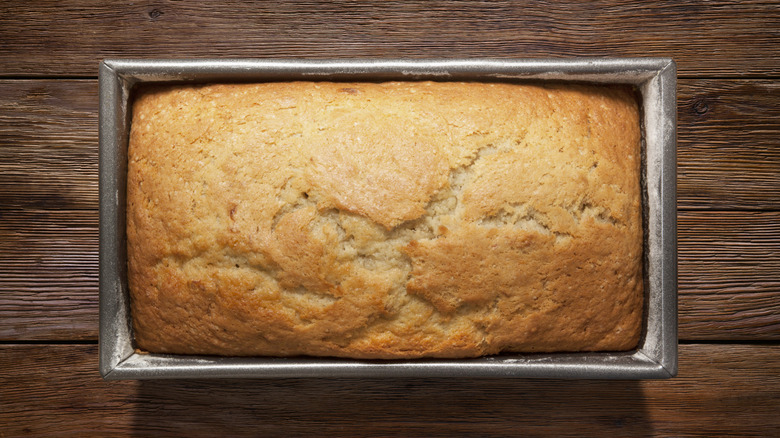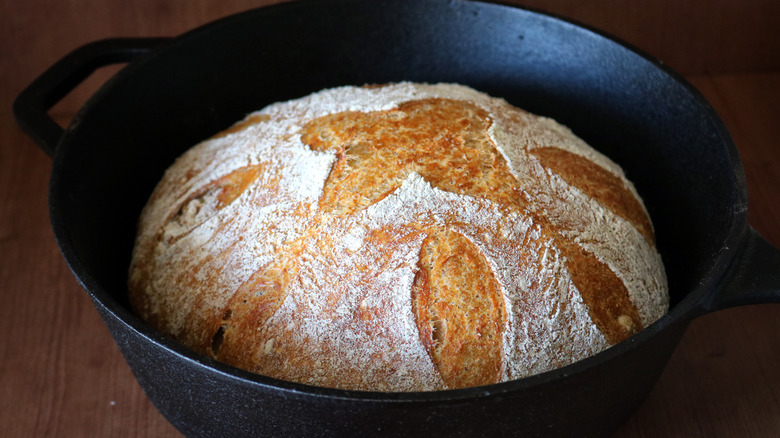The Pan Material You Should Never Use For Baking Bread
We may receive a commission on purchases made from links.
Baking bread is both a skill and an art. It has enough room for creativity while still requiring you to stick to certain rules, as each minor tweak to the baking process can impact the flavor and texture of your loaves. One of the often-overlooked parts of bread making is the vessel you're baking your loaves in — the size, the shape, but most importantly, the material. We spoke to Jami Callao, who oversees pastry and bread programs for NYC restaurant group Respect Hospitality, and asked her about the pan material that's a big no-no for baking bread.
"Avoid pans made from cheap steel," she told us. Most home bakers love to snag a good deal on baking supplies, but quality bread pans are worth the investment and will pay off in the long run, so steer clear of inexpensive steel varieties. Callao told us that cheap steel pans have "poor heat conductivity, leading to uneven baking." This means that your bread can come out of the oven browned on the outside and underbaked on the inside — something you won't realize until it's too late. Even heat distribution is crucial for the perfect loaf of sandwich bread, so this is the category you should prioritize when shopping for your next loaf pan.
The best (and worst) bread pan materials
"Quality materials ensure consistent results," Jami Callao stated. While there is no universally-best material, because different materials fit different baking needs, there are certainly ones with higher and lower quality. Steel pans are usually made from aluminized steel or carbon steel. Aluminized steel is often coated with a non-stick surface, which can pose an issue. In fact, professional chefs are known to avoid non-stick. The coating makes the bread pan unsafe at higher temperatures (such as 450 degrees Fahrenheit) and less effective when it gets scratched with repeated use. Carbon steel is similar to cast iron, so loaf pans made from this material are more heavy-duty and will last a long time with proper care, such as this Wrenbury Professional two-pound tin. Many don't have a non-stick surface, so must be oiled before use. Cast iron pans and Dutch ovens like this bread-shaped Edging Casting pan are in the same category of maintenance as carbon steel — they require a little extra TLC to avoid baked goods sticking, but the results are worth it, as they all give even baking results.
Other materials that to avoid in bread pans are aluminum, ceramic, glass, and silicone. Aluminum is popular because it's light and cheap, but it's known to warp at higher heat. Ceramic and glass pans heat up fast and cool off slowly, leading to uneven baking. Finally, silicone pans are simply too flimsy and overly insulating to yield the best results when baking bread recipes.

